

Now playing:
Watch this:
Choosing a portable drive that’s right for you
1:58
Editors’ note: This post was originally published on May 10, 2016 and is periodically updated.
The cloud is great. But if you need a serious amount of storage, online backup is never quite enough. Drawbacks such as intermittent broadband access or frustratingly slow speeds mean local storage is essential. And, of course, it never hurts to have a backup of the backup.
That’s where portable storage comes in. Whether you’re editing a home video, keeping zillions of family photos, storing your killer PowerPoint decks, keeping your MP3 collection at the ready or making quick backups at a critical time, local storage always beats the cloud, especially in terms of performance and accessibility.
I’m looking beyond generic USB sticks and SD cards here. This guide is for people who need high-capacity storage: multiterabyte hard disks and multigigabyte flash drives. These USB and Thunderbolt drives are physically smaller, more capacious, cheaper and faster than ever before. And because they’re “bus powered,” meaning they all draw power from the host computer (and, in some cases, even from phones or tablets) through the connecting data cable, there’s no need to carry a separate power adapter around.
With that in mind, here are five things to consider before you buy a portable drive — followed by my list of recommendations:
Choose the right connection
It all comes down to USB vs. Thunderbolt now that other types of connections are largely obsolete. Obviously you’ll want to get a drive that can work with your computer. So if your machine has a Thunderbolt or Thunderbolt 2 port (most popular in pre-2016 Mac computers) then you’ll want to get a Thunderbolt drive. On the other hand, since most computers have at least one regular USB port, getting a USB-based drive is a safe bet. Some portable drives support both Thunderbolt and USB. However, if you intend to use your drive for at least a few years, even with new computers, make sure you get one that’s future-proof by following the right connection trend.
Keep up with the trend
And the trend is the USB Type-C (or USB-C) connector. This new connector type is used by both the latest USB gadgets and all Thunderbolt 3 devices. In other words, all Thunderbolt 3 ports are USB-C ports. So if you get a new computer now, chances are it will have USB-C/Thunderbolt 3 ports. (This is the case for all Macs released in 2016 and likely those to be released in the future.)
Note that a USB-C portable drive can work with both a USB-C port and the regular USB (aka USB-A) port via a compatible cable, but a non-USB-C portable drive will not work with a USB-C port, unless you have an adapter. That said, if you get a USB-C portable drive, it will work with all existing computers and future ones. The only catch is currently they’re generally more expensive, but this will likely change in 2017.
Make sure it’s fast enough
Portable drives that use a solid-state drive (SSD) for storage tend to be superfast and great for heavy tasks such as editing an HD movie file. They can also be useful if you need to copy a large amount of data in a short time. But SSDs are also expensive. If performance isn’t that much of a concern for you, getting a hard drive-based portable drive (non-SSD) will save you a lot of money. If all you’re doing is watching a movie from the drive or backing up your data on a daily basis, for example, speed won’t be your biggest concern.
Also, keep in mind that Thunderbolt drives are generally faster than USB drives. And among USB drives, the USB 3.1 Gen 2 (10 gigabits per second) standard has twice the rated speed of USB 3.0 (or USB 3.1 Gen 1), which in turn is 10 times faster than USB 2.0.
Does it have enough storage?
Obviously, the more storage space, the better. But you don’t want to pay for storage you’re not going to use. Generally, for backup purposes, you’ll want a drive that has more storage space than the your laptop’s internal drive.
If storage capacity is your biggest concern, a hard drive-based portable drive is the way to go. You can get one with as much as 4TB in capacity for less than $130, £100 or AU$230. You can also get SSD-based portable drives of up to 4TB, but they can easily cost 10 times that much.
The rugged option
Are you clumsy with your tech? No problem. There are some rugged portable drives out there for people who need their gadgets to be able to take a little punishment.
OK. Now that we’re all caught up and we know what portable drives are and how they can help you, here are six models to choose from depending on your needs. If you want the top portable drives, however, check out this list.
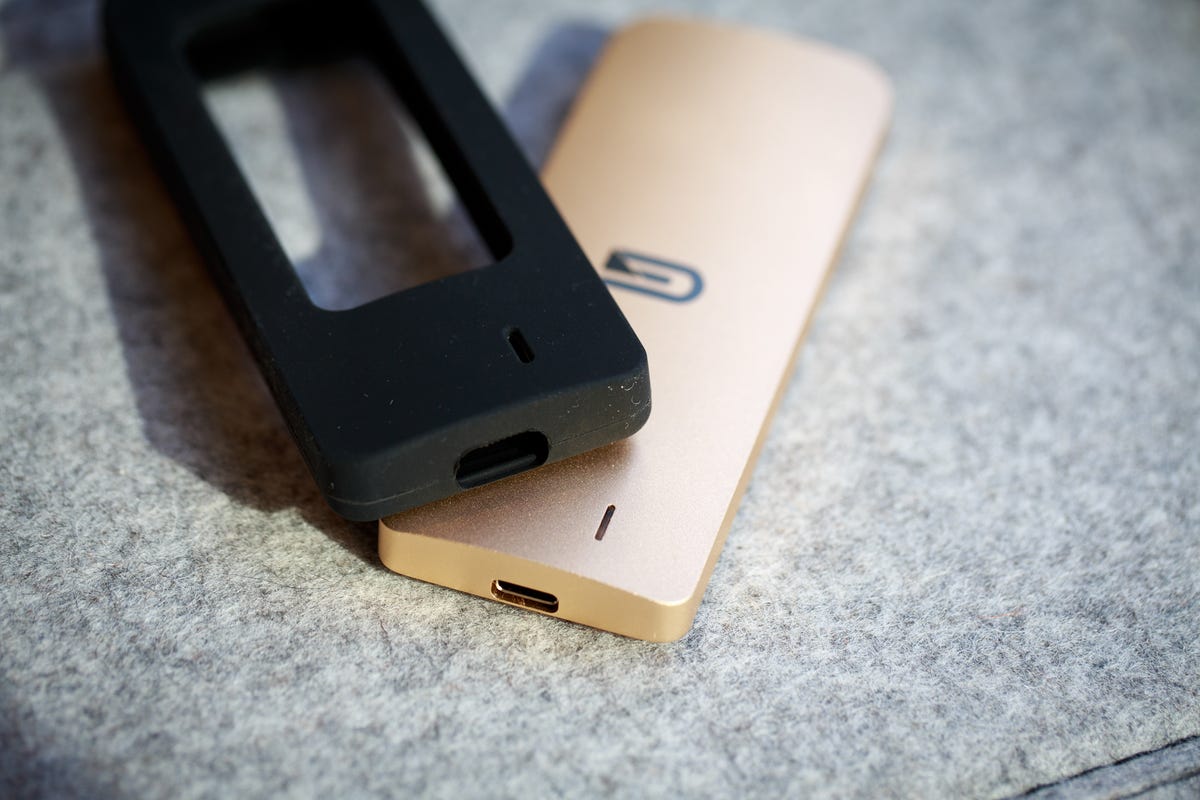

The Glyph Atom SSD.
Josh Miller/CNET
Glyph Atom SSD
Pros:
- Super-compact and super-fast
- Supports USB 3.1 Gen 2 with a USB-C port
- Rugged enough to be safe against drops and being run over by a car
- Available in MacBook-matching colors
- Includes cables for both USB-C and USB-A ports
Cons:
- Available only to up to 1TB of storage
- Short three-year warranty, relatively expensive, no security options
Bottom line: The Atom SSD is the fastest non-RAID portable drive on the market. That plus is compact, rugged design make it the best portable drive to date. And if you want extreme speed, there’s also the Atom RAID SSD that deliver almost twice the speed.
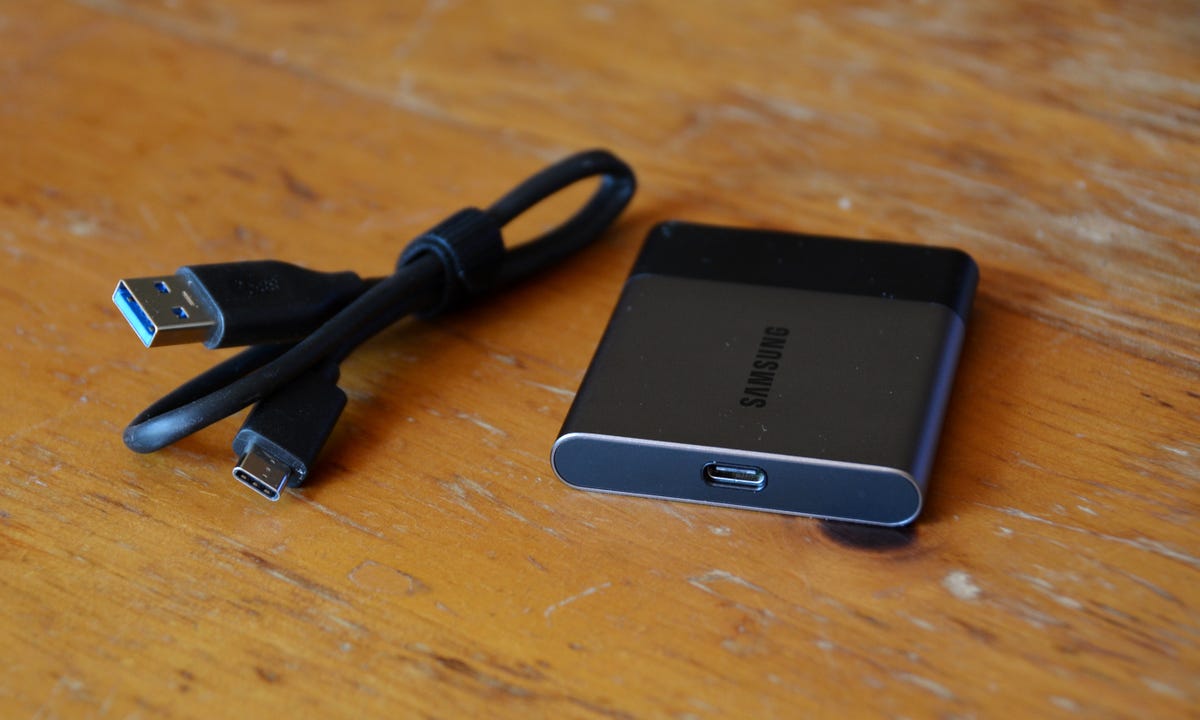

The Samsung Portable SSD T3.
Dong Ngo/CNET
Samsung Portable SSD T3
Pros:
- Super compact and offers up to 4TB of solid state storage space
- The drive is tough, too, with a rugged aluminum casing
- Performs quickly and includes a security option
- Works with certain tablets
- The USB-C port keeps the drive future-proof (But there’s a small catch! See below.)
Cons:
- It doesn’t include a USB-C-to-USB-C cable, which you’ll need to connect it to a USB-C port. You’ll need to get one yourself for about $20 for so. It’s best to get a Thunderbolt 3 cable.
- Expensive
- Short three-year warranty
Bottom line: You want your drive to be really fast, ultraportable and rugged, and have the ability to work with the latest USB technology? The T3 is right up your alley.
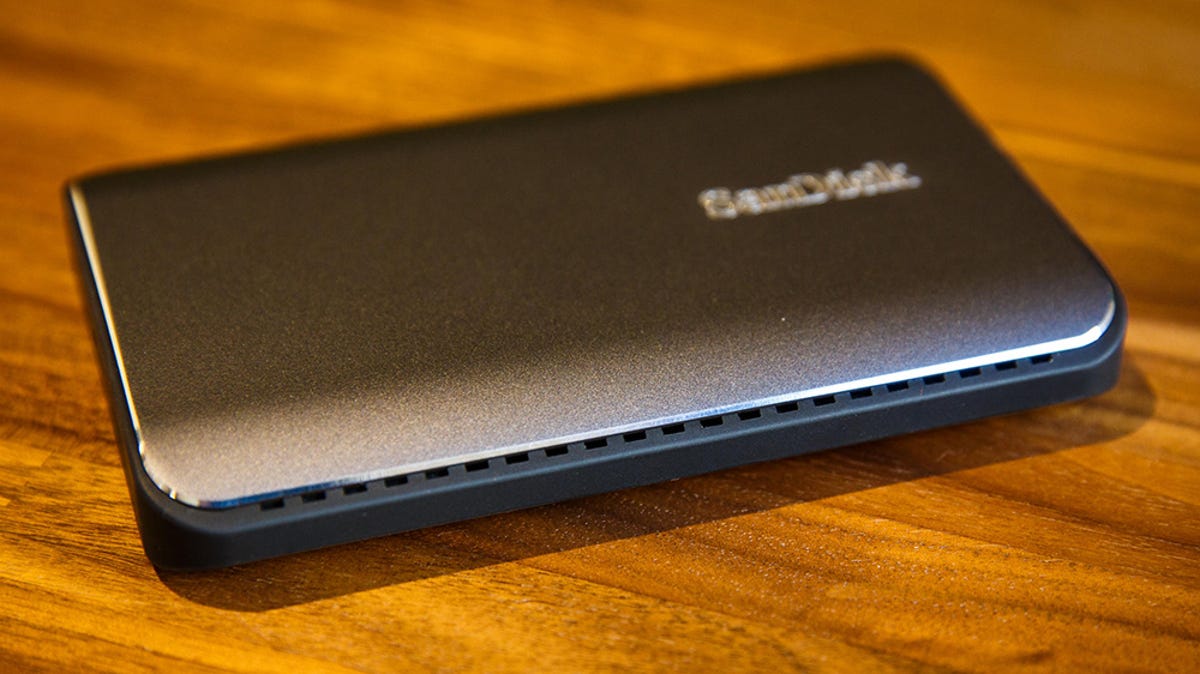

The SanDisk Extreme 900 Portable SSD.
Josh Miller/CNET
SanDisk Extreme 900 Portable SSD
Pros:
- The Extreme 900 SSD is speedy
- Supports USB-C port and includes cables for both USB-C and USB-A ports
- Rugged enough to keep its data safe if it’s dropped
- Security option to guard data against prying eyes
Cons:
- The drive is expensive and has a short three-year warranty
- It’s much larger than the T3 above with slightly less storage space
Bottom line: If you want a fast portable drive that’s physically large enough not to be easily misplaced, the SanDisk is an excellent choice.
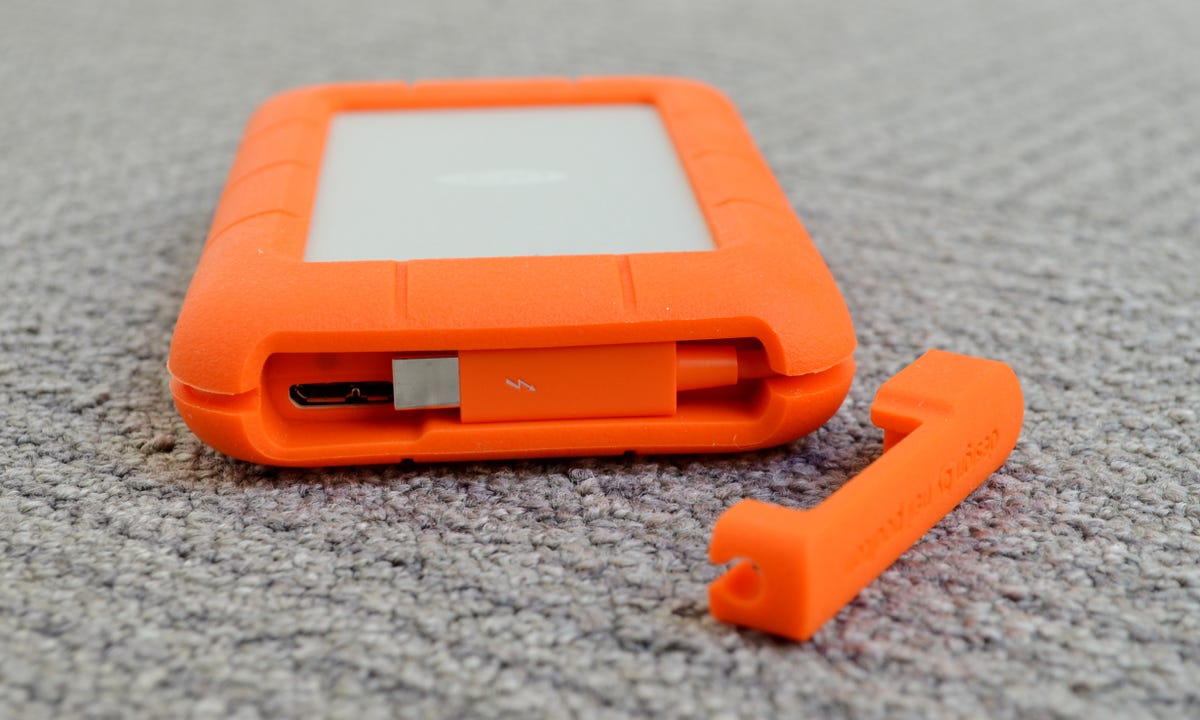

The LaCie Rugged Thunderbolt All-Terrain.
Dong Ngo/CNET
LaCie Rugged Thunderbolt All-Terrain
Pros:
- The Rugged Thunderbolt is one of the fastest portable drives on the market
- Supports both USB 3.0 and Thunderbolt 2
- Built-in Thunderbolt cable that wraps around its edges to save you from having to carry a cable around
- The drive is MIL-compliant, which means it can protect data against accidental drops of up to 6.6 feet (2 meters). And with the rubber cover on, the drive also provides IP 54-level protection against dust and water
Cons:
- Very expensive
- No USB-C port
- The capacity tops out at just 500GB
Bottom line: If you work in rough environments and need a flexible and super-fast drive that can be used for heavy tasks or to transfer data between a Thunderbolt 2-ready and USB-ready computers, you will find the LaCie an excellent accessory. You can’t plug it in an USB-C port (without an adapter), however.
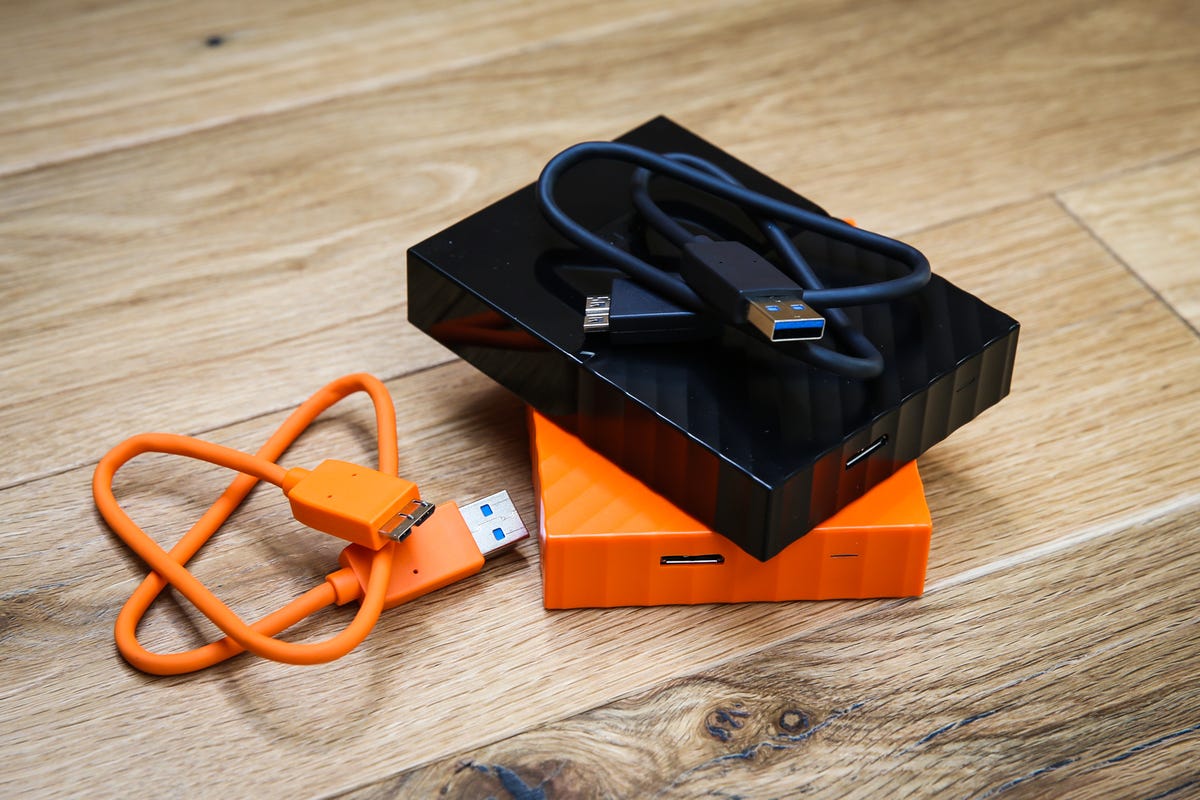

The WD My Passport.
Josh Miller/CNET
WD My Passport Ultra
Pros:
- The My Passport is affordable and offers up to 4TB
- Fast performance for a hard drive-based (non-SSD) portable drive
- Helpful backup software included
- Plenty of color options to choose from
Cons:
- The drive is a bit bulky
- No USB-C
Bottom line: If you need an affordable portable drive as storage expansion or for backing up your computer, you’ll find the My Passport an easy and safe choice. Alternatively, you could opt for the Seagate Backup Plus Ultra Slim.
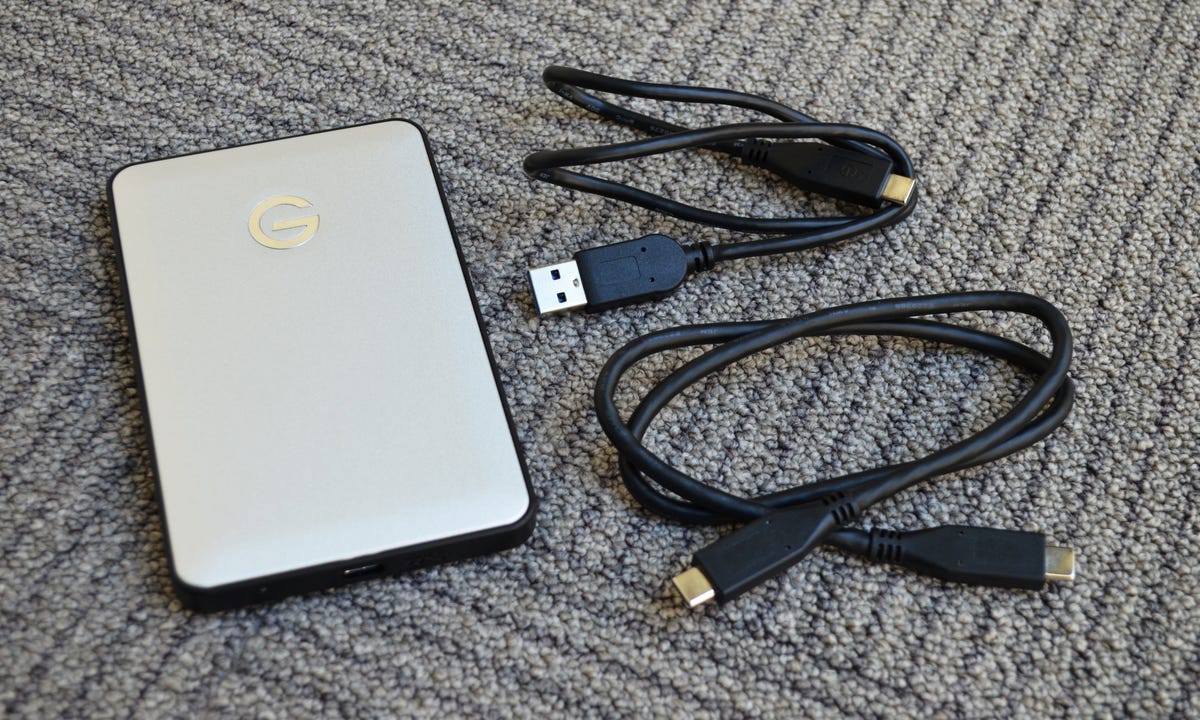

The G-Technology G-Drive Mobile USB-C.
Dong Ngo/CNET
G-Tech G-Drive Mobile USB-C
Pros:
- USB-C support, compatible with the previous version of USB
- Good performance, rugged design
Cons:
- Storage capacity maxes out at 1TB
- More expensive than other non-USB-C portable drives of the same capacity
Bottom line: If you want a straightforward USB-C portable drive for daily backups, the G-Tech G-Drive Mobile USB-C is the perfect fit. Alternatively, the Glyph BlackBox Plus is a good pick.




